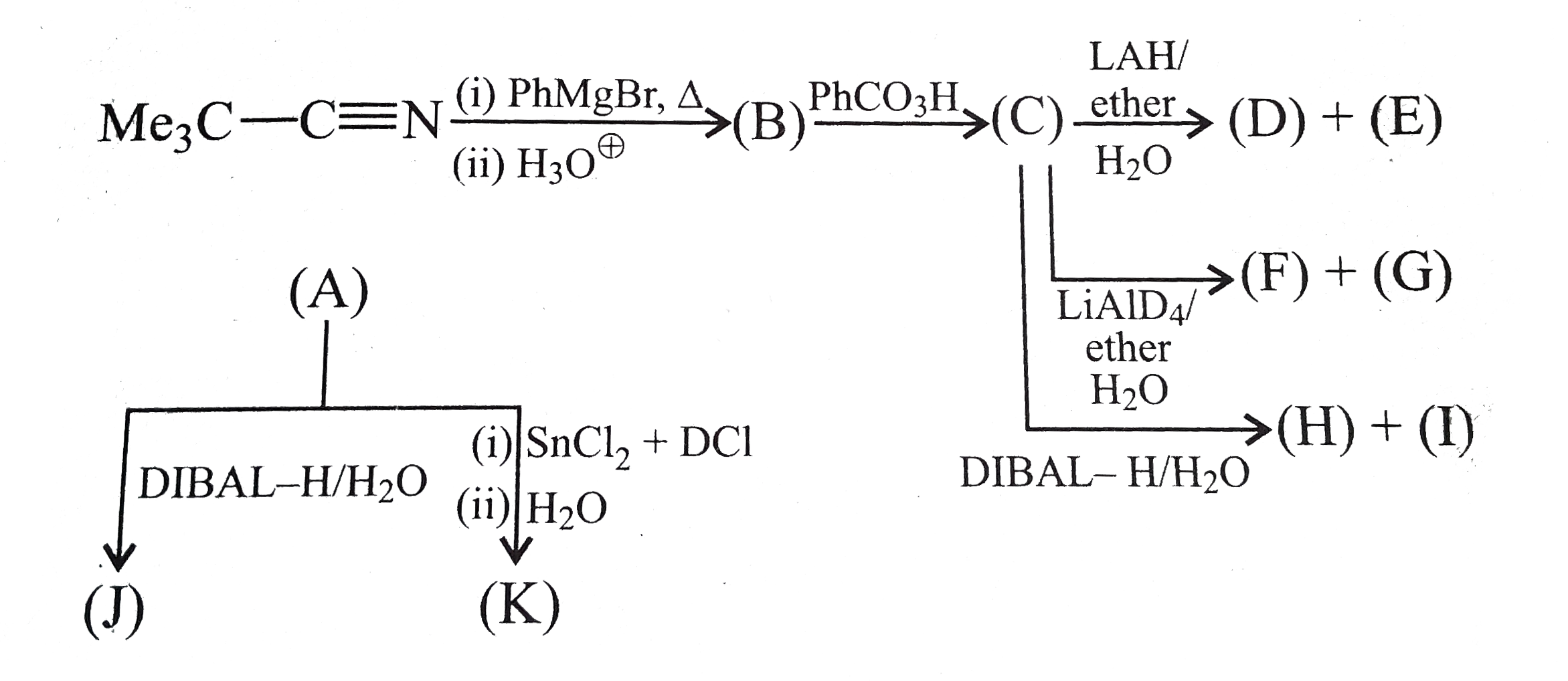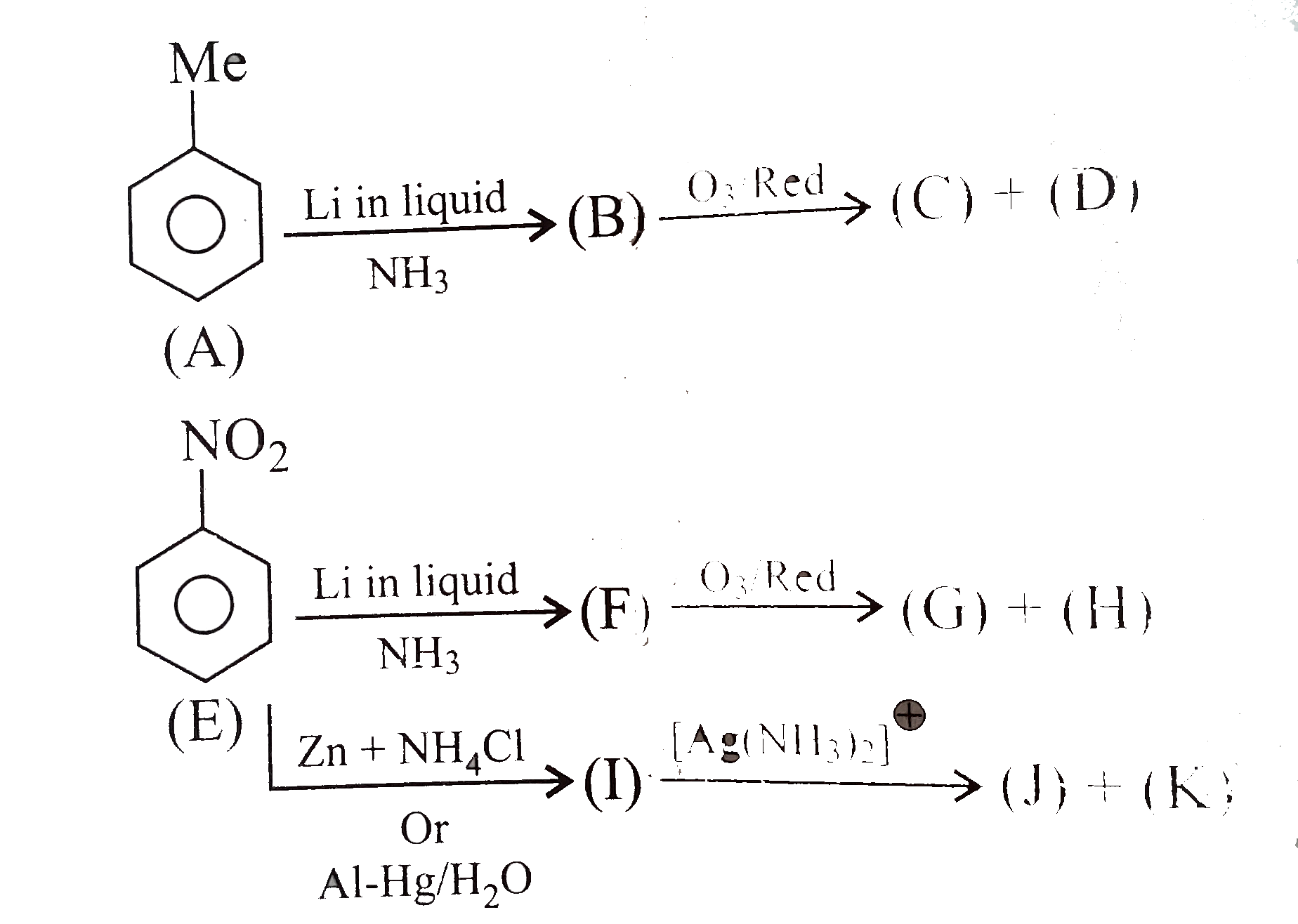
Compound (H) is:




The correct Answer is:c
RX in (I) with o−CN gives R−C≡N, while RX in (II) with CNo− gives R−⊕N≡o−C
(For explaination see solved Example 11.10)

Reactions are:

Topper's Solved these Questions
- AROMATIC COMPOUNDS AND ALKYL AND ARYL HALIDES BOOK - CENGAGE CHEMISTRY ENGLISHCHAPTER - AROMATIC COMPOUNDS AND ALKYL AND ARYL HALIDES EXERCISE - Exercises Linked Compreshension Type
11 Videos
- AROMATIC COMPOUNDS AND ALKYL AND ARYL HALIDES BOOK - CENGAGE CHEMISTRY ENGLISHCHAPTER - AROMATIC COMPOUNDS AND ALKYL AND ARYL HALIDES EXERCISE - Exercises Multiple Correct
32 Videos
- AROMATIC COMPOUNDS AND ALKYL AND ARYL HALIDES BOOK - CENGAGE CHEMISTRY ENGLISHCHAPTER - AROMATIC COMPOUNDS AND ALKYL AND ARYL HALIDES EXERCISE - Exercises Concept Application
4 Videos
- APPENDIX INORGANIC VOLUME 2BOOK - CENGAGE CHEMISTRY ENGLISHCHAPTER - APPENDIX INORGANIC VOLUME 2EXERCISE - Short Answer Type
179 Videos
- BIOMOLECULESBOOK - CENGAGE CHEMISTRY ENGLISHCHAPTER - BIOMOLECULESEXERCISE - Exercises Archives (Analytical And Descriptive)
8 Videos
Similar Questions
A tertiary alcohol (H) upon acid-catalysed dehydration gives a product (I). Ozonolysis of (I) leads to compounds (J) and (K). Compound (J) upon reaction with KOH gives benzyl alcohol and a compound (L), whereas (K) on reaction with KOH gives only (M).

Compound (H) is formed by the reaction of:
View SolutionA tertiary alcohol (H) upon acid-catalysed dehydration gives a product (I). Ozonolysis of (I) leads to compounds (J) and (K). Compound (J) upon reaction with KOH gives benzyl alcohol and a compound (L), whereas (K) on reaction with KOH gives only (M).

Compound (H) is formed by the reaction of:
View SolutionA tertiary alcohol (H) upon acid-catalysed dehydration gives a product (I). Ozonolysis of (I) leads to compounds (J) and (K). Compound (J) upon reaction with KOH gives benzyl alcohol and a compound (L), whereas (K) on reaction with KOH gives only (M).

Compound (H) is formed by the reaction of:
View Solution
The compounds (H) and (I), repectively, are:
View Solution
The reaction and mechanism involved in the formation of compound (H) form (A), respectively, are:
View SolutionCompound X (C5H10O) is a chiral alcohol. It is catalytically hydrogenated to an achiral alcohol Y (C5H12O) and oxidized by activated MnO2 to an achiral carbonyl compound Z(C5H8O). Compound X is
View SolutionTo which of the following compounds H2 adds most readily?
View Solution
The compound (G) and (H), respectively, are:
View Solution
The compound (G) and (H), respectively, are:
View SolutionThe number of isomers of the aromatic compound C8H10 is :
View Solution
